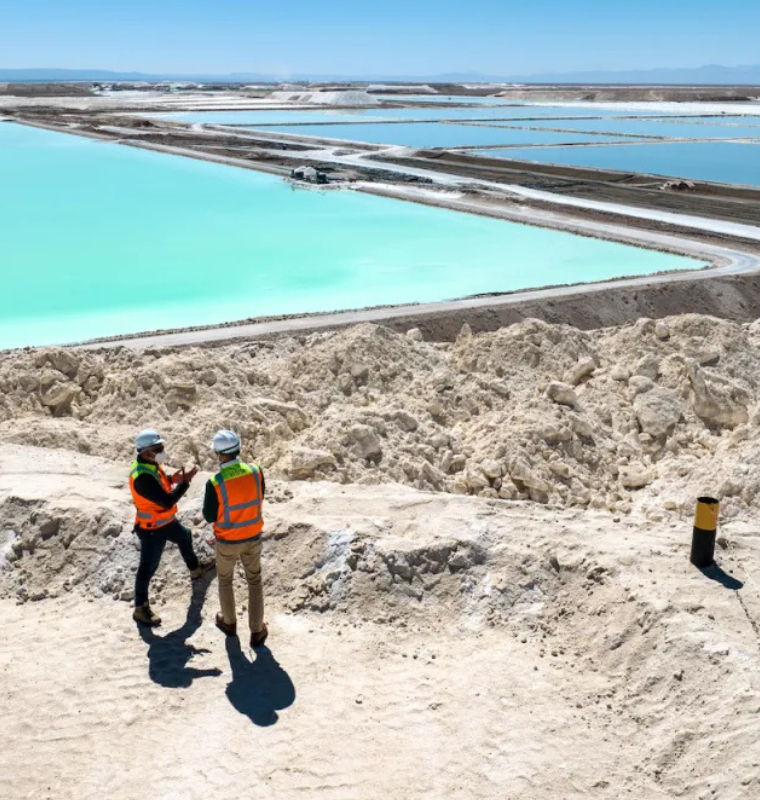Tensions Escalate Over Water as US and Mexico Clash Amid Historic Drought
Tensions Escalate Over Water as US and Mexico Clash Amid Historic Drought
By
Rachel Steinberg
Last updated:
July 15, 2025
First Published:
August 3, 2025

Photo: Yahoo
A Parched Landscape Turns Political
In the scorched town of San Francisco de Conchos, located in Mexico’s northern Chihuahua state, the local community is desperately seeking divine intervention. With 30 consecutive months without rainfall, farmers and their families gather beside Lake Toronto, now just a ghost of its former self, for a mass prayer led by a local priest. What was once the lakebed is now cracked, dry earth — a bleak indicator of the region's accelerating water crisis.
Rafael Betance, who has voluntarily monitored the La Boquilla Dam for 35 years, points to the bone-dry landscape and says, “This should all be underwater.” The dam, once a crucial reservoir, now sits at just 14% of its total capacity, with water levels 26.5 meters below the high-water mark.
The Treaty Under Fire
At the heart of the crisis lies a 1944 water-sharing treaty that obligates Mexico to send 430 million cubic meters of water annually from the Rio Grande to the U.S., while the U.S. reciprocates with 1.85 billion cubic meters from the Colorado River to supply Mexican cities like Tijuana and Mexicali.
However, Mexico has repeatedly fallen short of its annual water commitments, particularly during prolonged drought periods. Texas lawmakers, backed by President Donald Trump, are now pushing back hard. In April 2025, Trump accused Mexico of “stealing” water and threatened tariffs and sanctions unless it delivers the water owed — though no firm deadline has been given.
Mexico's President Claudia Sheinbaum has acknowledged the deficit but has sought a diplomatic resolution. So far, 75 million cubic meters have been transferred through the Amistad Dam, still a mere fraction of the 1.5 billion cubic meters of outstanding debt.
Clashes at the Border and Rising Tensions
In 2020, tensions reached a boiling point when violent protests at La Boquilla Dam led to the deaths of two Mexican citizens. Farmers, outraged by the diversion of local water to the U.S., clashed with the National Guard.
On the U.S. side, frustration runs equally high. Brian Jones, a fourth-generation farmer in Texas’s Rio Grande Valley, says he's only been able to plant half of his acreage for the past three years due to insufficient irrigation water.
“All we're asking for is what’s rightfully ours under the treaty — nothing more,” Jones insists, also accusing Mexico of hoarding water and using it to grow competing crops, such as walnuts and alfalfa, which require large volumes of water.
Disputed Interpretations and Agricultural Inefficiencies
Mexican farmers argue the treaty allows for flexibility during times of scarcity. They say water must first be used to meet domestic needs, especially during years when the Rio Conchos runs dangerously low.
Agricultural practices also play a role. In the Rio Conchos Valley, water-intensive crops like walnut trees are commonly irrigated using traditional flooding techniques, which are highly inefficient.
However, some farmers, like Jaime Ramirez, a former mayor of San Francisco de Conchos, are investing in modern sprinkler systems that use up to 60% less water. But many of his neighbors still rely on outdated methods due to the high upfront costs of upgrading.
"This is a desert region," says Ramirez. "If the rains don't come this year, there won't be any agriculture next year. The remaining water will be reserved solely for drinking."
A Treaty From a Different Era
Critics in Mexico argue the 1944 treaty no longer reflects modern realities, including climate change, rising urban populations, and shifting agricultural demands. While the agreement was appropriate for its time, it doesn't address the complexities of today’s water crisis.
Texan farmers, like Jones, disagree. “This treaty was signed when my grandfather was farming. It’s seen wars, recessions, and political change. It still stands, and Mexico should respect it.”
Environmental Fallout and the Future
Beyond agriculture, the drying of Lake Toronto poses serious environmental risks. As the lake shrinks, the remaining water heats up more rapidly, endangering local marine life and threatening what was once a tourism-based economy.
Rafael Betance, standing near the lake he has watched for decades, reflects, “We’re running out of options. Praying for rain is all we have left.”
Final Thoughts
As climate change continues to rewrite the rules of resource management, water treaties forged in the past are being stress-tested like never before. Without structural reforms, regional cooperation, and investment in sustainable irrigation, both the U.S. and Mexico could face an intensifying cycle of drought, food insecurity, and political conflict — with farmers and ecosystems caught in the middle.
Popular articles
Subscribe to unlock premium content
Bolivia How Lithium Mining Policies Are Positioning It as the Next Global EV Battery Hub

Naval Ravikant The Angel Investments That Quietly Made Him a Multimillionaire

Rising From the Rubble Lessons From Billionaires Who Failed 10 Times Before Success

Bolivia How Lithium Mining Policies Are Positioning It as the Next Global EV Battery Hub

Naval Ravikant The Angel Investments That Quietly Made Him a Multimillionaire

Bolivia How Lithium Mining Policies Are Positioning It as the Next Global EV Battery Hub









